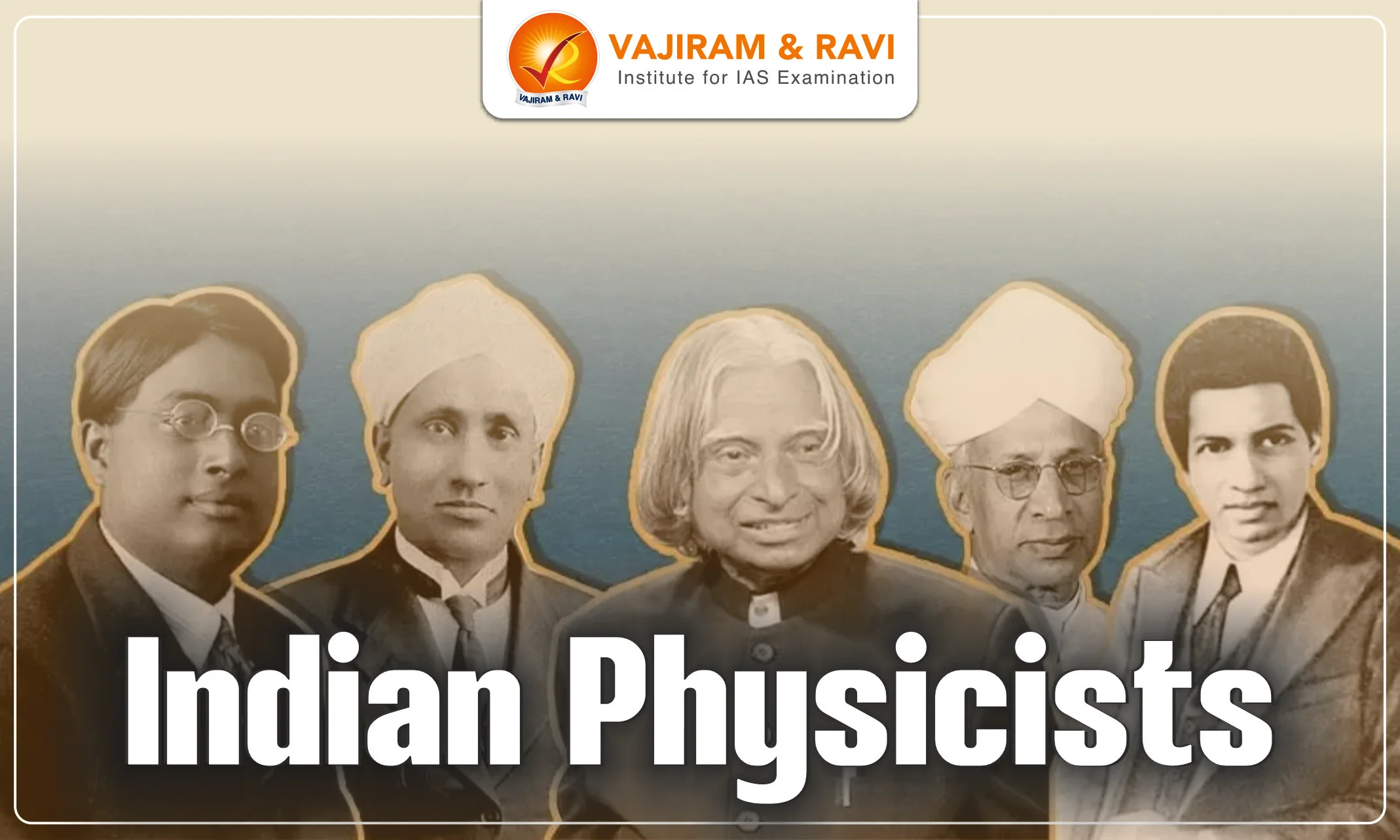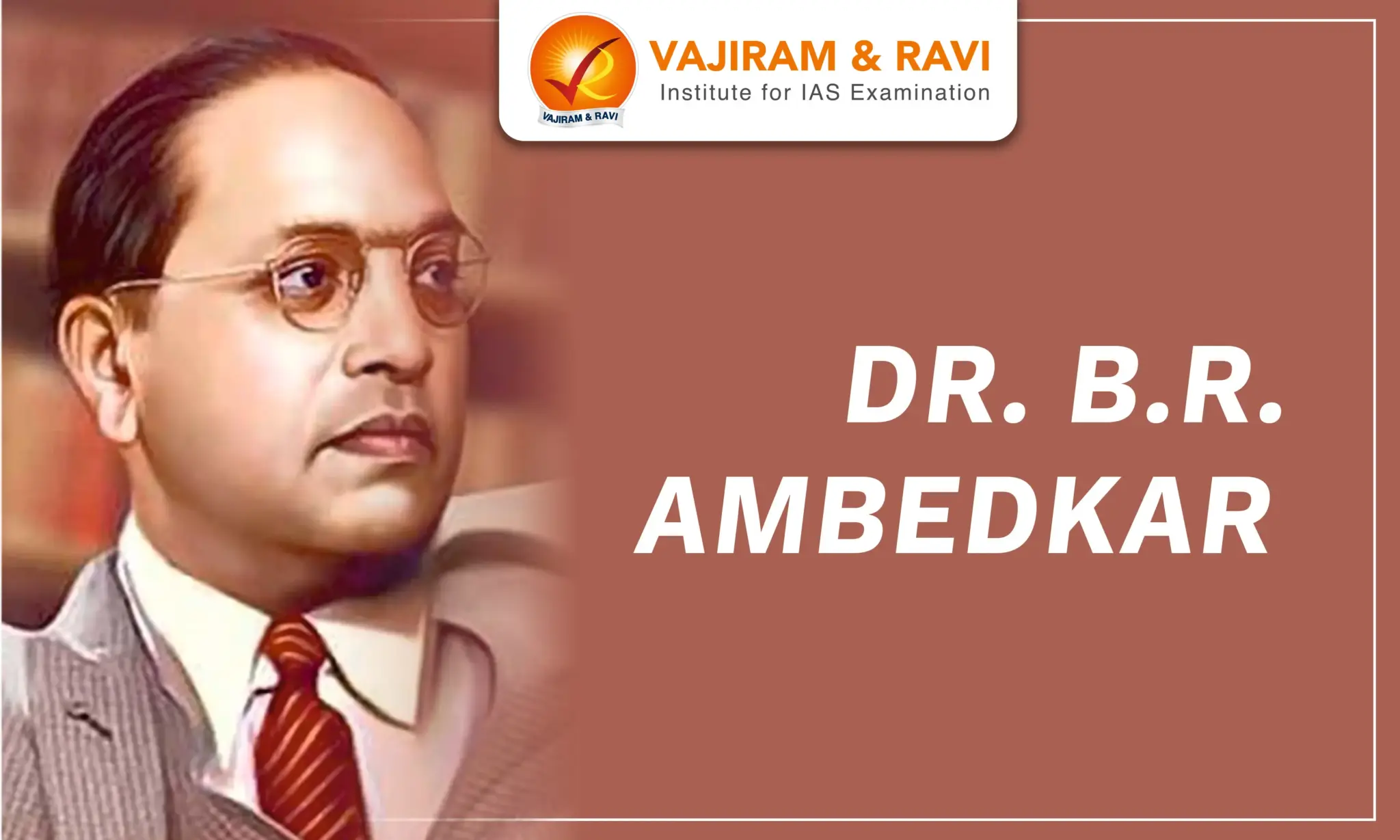The early 20th century is considered a time when the foundation of modern physics was established around the world. Despite being a colonised nation, Indian physicists were not far behind in contributing to this revolutionary change in physics.
The pioneers of modern physics in India were C.V. Raman, J.C. Bose, Satyendra Nath Bose, etc., who inspired the next generations to take a leap forward in research and development, thereby playing an important role in the growth of scientific temper in India.
India’s Achievements in Physics
India’s contributions in physics have been remarkable, either from the pioneers like Sir CV Raman, J.C. Bose, Satyendra Nath Bose, etc., or from Subrahmanyam Chandrasekhar, Homi Bhabha, etc., just after independence. The next phase of physicists were Prahlad Chunilal Vaidya and Amal Kumar Raychaudhuri, both involved in the study of general relativity. Later, E. C. George Sudarshan and other modern physicists like Ashoke Sen have also made India proud. A detailed account of the contributions of the Indian physicists and the contemporary developments in the subject is being followed.
Top 10 Indian Physicists and their Contributions
The contributions of some notable Indian physicists are listed below:
Sir CV Raman
- Sir CV Raman is known for his work on the scattering of monochromatic light through a transparent medium, known as Raman Effect.
- He was awarded the Nobel Prize in Physics in 1930 for this work. He was the first Asian to get this recognition.
- The Raman Effect (scattering) provides information on molecular vibration and rotational energy, which are the basis of its numerous applications.
- The day on which the Raman Effect was discovered (February 28, 1928) is commemorated as National Science Day in India.
Jagdish Chandra Bose (1858-1937)
- Dr. Bose is popular as the inventor of the Crescograph, which can record even the millionth part of a millimetre of plant growth and movement.
- He demonstrated that plants also have a circulatory system using graphs produced by the Crescograph.
- To demonstrate that even metals respond to external stimuli, Dr. Bose also popularised numerous other instruments and gave them the name Bose instruments.
- Bose's instruments have demonstrated how even steel and metals used in machinery and scissors can become worn out and regain their effectiveness after a short break.
- Besides the Crescograph and other Bose instruments, his wireless (radio) inventions also preceded those of Marconi (an Italian electrical engineer).
- He was the first to create an electric wave refraction indicator and a wireless coherer (a radio signal detector).
Satyendranath Bose (1894-1974)
- S. N. Bose is popular for his work on quantum mechanics, Bose–Einstein statistics and the Bose–Einstein condensate. Bose received the Padma Vibhushan in 1954.
Bose-Einstein Statistics
- By treating radiation as a gas of photons and using new statistical techniques for counting photon states, Bose provided a new derivation of Planck's law and presented it in an article to Einstein.
- In agreement with Bose's article, Einstein used a gas of molecules to apply the same strategy. This formed the basis of the Bose-Einstein statistics.
Bose-Einstein condensate
- The pioneering ideas of Bose, developed further by Einstein, were confirmed by the observation of a new state of matter in a dilute gas of ultra-cold alkali atoms, the Bose-Einstein condensate.
- This state is achieved when the atoms of certain elements are cooled to near absolute zero (0 Kelvin or minus 273.15 Celsius).
Meghnad Saha
- Saha's Equation (the Thermal Ionisation Equation), which links an element's ionisation state to temperature and pressure, is his most well-known contribution to astrophysics.
- The spectral classification of stars was explained by his theory.
- The Griffith Prize of Calcutta University was awarded to him for his thesis, "Origin of Lines in Stellar Spectra."
- Saha wrote his renowned book, "A Treatise on Heat”.
- He created a device that allows for measuring the weight and pressure of solar rays.
- The scientific community still recognises his contributions to other fields such as selective spectroscopy, solar corona, solar radio emission, molecular dissociation, radio wave propagation in the ionosphere, radiation pressure, and beta radioactivity.
Subrahmanyan Chandrashekhar
- He was an Indian-born American astrophysicist who worked on the theory of colliding gravitational waves and stellar evolution.
- His research on stellar evolution yielded a number of current theoretical models of the life cycles of massive stars and black holes.
- Chandrasekhar Limit: He proved that the mass of a white dwarf (core of the dying medium sized stars) cannot exceed 1.4 times that of the Sun.
- He won the Nobel Prize in Physics in 1983 for his contribution.
- In his honour, NASA’s premier X-ray observatory, Chandra X-ray Observatory, was named after him.
Vaina Bappu
- Vaina Bappu was an Indian astronomer who laid the foundation of modern astronomy and telescope facilities in India, including the Vainu Bappu Observatory.
- He was also president of the International Astronomical Union.
- He is best known for the discovery of the Wilson-Bappu effect.
Wilson-Bappu Effect
- Bappu made an exhaustive survey of Wolf-Rayet stars, a subject on which he remained an authority throughout his life.
- He investigated the incidence of H and K emission from ionised calcium in late-type stars, and the results revealed a relationship connecting the equivalent width of the 1-1 and K lines with the absolute magnitude of the star.
- The analysis was completed in collaboration with Professor OC Wilson of the Observatory, and the relationship is now known as the Wilson-Bappu effect in the convention of astronomical literature.
- This is one of the basic relationships that is frequently used to calculate stellar luminosity.
G. N. Ramachandran
- G. N. Ramachandran made a number of significant contributions to molecular biophysics, particularly in the field of protein structure research.
- The Ramachandran phi-psi plot, also known as the "Ramachandran Plot," is a common way for textbooks to describe protein structures.
- A critical development in our understanding of peptide structure was the identification of collagen's triple helical structure or triple helix. It was provided by Ramachandran.
- He created a three-dimensional picture of organic material and named it Computerised Axial Tomography, or CAT.
E.C. George Sudarshan
- E. C. G. Sudarshan was a notable theoretical physicist.
His contributions:
- George and his doctoral advisor, Robert Marshak developed “V-A theory” of the weak force (popularised by Richard Feynman) which paved the way to develop the electroweak theory.
- He was the first to develop the “quantum representation of coherent light”. Glauber, after denying it first, used it to develop P- representation or “Glauber–Sudarshan representation”.
- Sudarshan was the first to suggest the existence of Tachyons, the hypothetical particles that move faster than the speed of light.
- To study the theory of open quantum systems, he created a fundamental formalism known as dynamical maps.
- Additionally, he and Baidyanath Misra put forth the Quantum Zeno effect.
- Despite nine nominations, he never received the Nobel Prize.
- Although it was Sudarshan’s result, Glauber got the Nobel prize in 2005 for the Glauber–Sudarshan representation.
- Also, it was his fundamental result on which "Steven Weinberg, Sheldon Glashow and Abdus Salam” received the Nobel Prize in 1979.
J.V. Narlikar
- J.V. Narlikar is an Indian astronomer who has contributed to various aspects of astrophysics.
- Hoyle-Narlikar Theory: The Hoyle-Narlikar theory is a theory of gravity proposed by Fred Hoyle and Jayant Narlikar that originally fits into the quasi-steady state model of the universe.
- Unlike the standard cosmological model, the quasi-steady state hypothesis implies the universe is eternal.
- According to Narlikar, multiple mini bangs would occur at the centre of quasars with various creation fields (or C-field). These quasars continuously generate matter out of empty space due to the local concentration of negative energy.
- In order to maintain the mass density constant as the universe expands, the negative energy would also prevent violations of conservation laws.
- The metallic dust made from supernovae, which radiates the energy of stars, would be the source of the low-temperature cosmic background radiation rather than the Big Bang.
Ashoke Sen
- Ashoke Sen is one of the best string theorists working today.
- His work on strong-weak coupling duality and the theory of tachyon condensation, also known as the Sen conjecture, are among his contributions to string theory.
- His recent contributions include the attractor mechanism, the accurate counting of black hole microstates, and the advancements in superstring perturbation theory and string field theory.
- This includes the extremal black hole entropy function formalism and its applications to attractors.
Contemporary Developments in the field of Physics in India
- India in Astrophysics: Sandip Chakrabarti was the first scientist to suggest that gamma-ray bursts are the birth cry of black holes.
- Many Indian universities and research institutions are involved in research in astronomy.
- Consequently, various telescopes and observatories have been established in India as well as outside, with Indian participation.
- India in Particle Physics: Indian scientists have been involved in the multiple teams at CERN.
- In the construction of the Large Hadron Collider (LHC), the world's largest and most powerful particle accelerator.
- In the ALICE experiment, which is a dedicated experiment for the search and study of Quark Gluon Plasma (QGP).
- In the CMS experiment, which is one of the two experiments that discovered the Higgs Boson and Large Hadron Collider Grid (LCG).
- Indian physicist Rohini Godbole is a member of the International Detector Advisory Group (IDAG) for the International Linear Collider at the CERN laboratory.
- Research on Gravitational Waves: India has planned to establish an advanced gravitational wave observatory as part of the worldwide network.
- The LIGO-India project is being built and operated in collaboration with LIGO USA and its international partners.
- Research on Neutrinos: The India-based Neutrino Observatory is going to be established to study the fundamental particles known as neutrinos. The Bodi Hills area of Tamil Nadu's Theni district would be the site of the observatory.
- India in String Theory: Various Indian research institutes and scientists are involved in research on string theory. Ashoke Sen is one of them.
- India in International Thermonuclear Experimental Reactor (ITER, or, The Way):
- India is one of the 35 nations to work on the ambitious energy project, called ITER, which is the world's largest tokamak (a magnetic nuclear fusion device)
- has been designed to prove the feasibility of fusion as a large-scale and carbon-free source of energy based on the same principle that powers our Sun and stars.
Last updated on November, 2025
→ Check out the latest UPSC Syllabus 2026 here.
→ Join Vajiram & Ravi’s Interview Guidance Programme for expert help to crack your final UPSC stage.
→ UPSC Mains Result 2025 is now out.
→ UPSC Notification 2026 is scheduled to be released on January 14, 2026.
→ UPSC Calendar 2026 is released on 15th May, 2025.
→ The UPSC Vacancy 2025 were released 1129, out of which 979 were for UPSC CSE and remaining 150 are for UPSC IFoS.
→ UPSC Prelims 2026 will be conducted on 24th May, 2026 & UPSC Mains 2026 will be conducted on 21st August 2026.
→ The UPSC Selection Process is of 3 stages-Prelims, Mains and Interview.
→ UPSC Result 2024 is released with latest UPSC Marksheet 2024. Check Now!
→ UPSC Prelims Result 2025 is out now for the CSE held on 25 May 2025.
→ UPSC Toppers List 2024 is released now. Shakti Dubey is UPSC AIR 1 2024 Topper.
→ UPSC Prelims Question Paper 2025 and Unofficial Prelims Answer Key 2025 are available now.
→ UPSC Mains Question Paper 2025 is out for Essay, GS 1, 2, 3 & GS 4.
→ UPSC Mains Indian Language Question Paper 2025 is now out.
→ UPSC Mains Optional Question Paper 2025 is now out.
→ Also check Best IAS Coaching in Delhi
Indian Physicists FAQs
Q1. FAQs on Indian Physicists+
Q2. What is the contribution of J.C. Bose in the field of physics?+
Q3. What is Bose-Einstein condensate?+
Q4. What is the Chandrasekhar Limit?+
Q5. Who developed collagen's triple helical structure?+
Tags: indian physicists quest



























